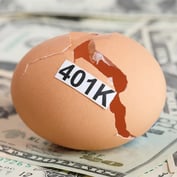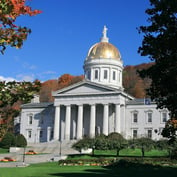With an economy that’s still drooping in spots and high long-term unemployment now a part of the landscape, it isn’t surprising that politicians have taken notice of the retirement crisis in America.
American workers’ lack of retirement readiness has been dropped on the doorstep of the defined contribution market and it’s been pointed out again and again that 401(k) plans just don’t offer the same benefits and guarantees that used to come with defined benefit pension plans.
But is the 401(k) industry so bad? Why is it always cast as an outlaw in the retirement readiness showdown?
Todd Berghuis, senior vice president of ERISA compliance for Ascensus, said in a recent blog post that while no industry is perfect, including the 401(k) market, people shouldn’t shoot the messenger when it comes to news about retirement readiness. Having access to a retirement vehicle is more important than finding a nonexistent perfect retirement vehicle, he said.
Numerous studies in the past year have highlighted that although 80 percent of full-time American workers have access to a workplace retirement plan, only about 60 percent take advantage of that. And those that do take advantage don’t defer enough of their salary to meet their income needs in retirement.
Greg Ward, director of the Financial Finesse think tank and a senior resident financial planner with the company, said that much of the criticism of the 401(k) industry does stem from the fact that employees are not doing enough to prepare for retirement and most don’t even know how much money they need to save.
Much of the emphasis in retirement education has been on saving for retirement, but the amount needed in retirement is a vague notion nobody cares to explore. Obviously, if a person is setting money aside for retirement, that amount will be enough. But “in reality, they should be saving more,” Ward said.
“Part of it is acknowledging that we have been telling them to save but not giving them the tools, resources or education they need to know how much they should be saving with respect to investments,” he added.
And different generations approach retirement differently. Millennials are more conservative investors, meaning they are missing out on the years when they should be taking on more risk to build their retirement nest egg, Ward said. Generation X, in contrast, is the most likely generation to invest in the stock market.
Another reason people are cynical about the 401(k) industry stems from the roots of the industry itself.
When the industry first got started, back in the 1980s, the primary source of education about the industry were 401(k) providers themselves, he said.
“There’s a lot of money in retirement plans and for many years, the 401(k) providers had a lot at stake to get people to save money. We also know a lot of revenue is generated through retail mutual funds and traditional investments. For a long time we didn’t pay as much attention to the fees as we did the performance,” Ward said.
Questioning plan expenses
When the bottom dropped out of the dot.com economy and stocks weren’t going as gangbusters as they had in the past, people began to question 401(k) plan expenses.
That’s why government regulatory agencies like the Securities and Exchange Commission, Internal Revenue Service and Department of Labor stepped in to make retirement regulations a priority, churning out fee disclosure rules for both retirement plan providers and plan sponsors and teasing the industry with proposals of a new fiduciary standard, one that would hold brokers to the same advice standards as registered investment advisors.








 January 17, 2014 at 06:27 AM
January 17, 2014 at 06:27 AM










